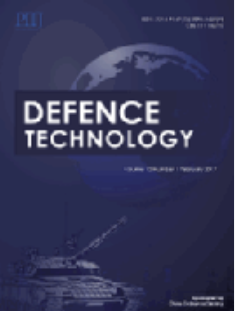Investigation of mixing performance and safety characteristics of polymer-based energetic materials simulant via screw-pressing blending extrusion charges
IF 5
Q1 ENGINEERING, MULTIDISCIPLINARY
引用次数: 0
Abstract
The present study introduces a screw-pressing charging method to tackle deficiencies in automation and charge uniformity during the melt-casting of polymer-based energetic materials. To ensure the safety of the experiments, this study used inert materials with similar physical properties to partially substitute for the actual energetic components in the preparation of simulant materials. By thoroughly analyzing slurry physical properties, a simulation framework and an extensive performance evaluation method were developed. Such tools guide the design of the structure and configuration of process parameters. Results demonstrate that employing the Pin element significantly enhances radial mixing within the screw, minimizes temperature variations in the slurry, and improves both efficiency and safety in the mixing process. Further, adjustments such as widening the cone angle of the barrel, modifying the solid content of the slurry, and varying the speed of the screw can optimize the mechanical and thermal coupling in the flow field. These adjustments promote higher-quality slurry and create a safer production environment for the extrusion process.
基于螺杆挤压混炼料的高分子含能材料模拟料混炼性能及安全特性研究
针对聚合物基含能材料熔铸过程中存在的自动化和装料均匀性不足的问题,提出了一种螺杆加压装料方法。为了保证实验的安全性,本研究在模拟材料的制备中,采用了具有相似物理性质的惰性材料,部分替代了实际含能组分。通过对浆料物性的深入分析,建立了浆料的模拟框架和广泛的性能评价方法。这些工具指导结构设计和工艺参数配置。结果表明,采用Pin元件可以显著增强螺杆内的径向混合,使料浆内的温度变化最小化,提高了混合过程的效率和安全性。此外,通过扩大筒体锥角、改变浆料的固含量、改变螺杆转速等调整可以优化流场的机械和热耦合。这些调整提高了浆料的质量,并为挤出过程创造了一个更安全的生产环境。
本文章由计算机程序翻译,如有差异,请以英文原文为准。
求助全文
约1分钟内获得全文
求助全文
来源期刊

Defence Technology(防务技术)
Mechanical Engineering, Control and Systems Engineering, Industrial and Manufacturing Engineering
CiteScore
8.70
自引率
0.00%
发文量
728
审稿时长
25 days
期刊介绍:
Defence Technology, a peer reviewed journal, is published monthly and aims to become the best international academic exchange platform for the research related to defence technology. It publishes original research papers having direct bearing on defence, with a balanced coverage on analytical, experimental, numerical simulation and applied investigations. It covers various disciplines of science, technology and engineering.
 求助内容:
求助内容: 应助结果提醒方式:
应助结果提醒方式:


